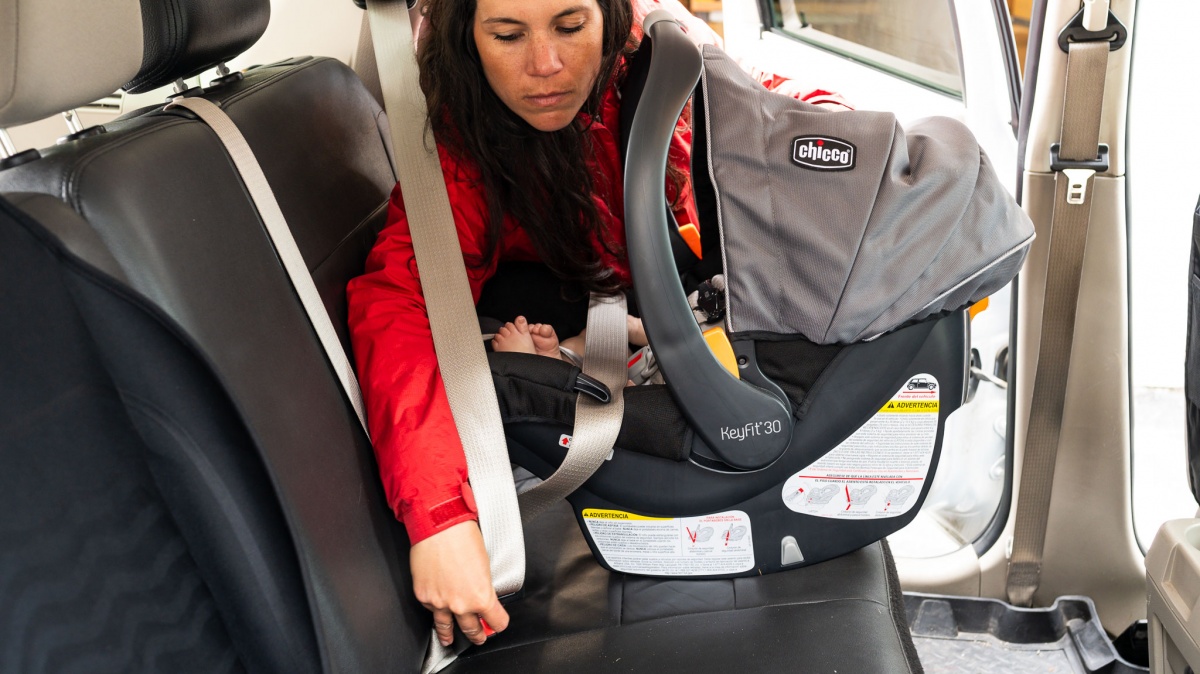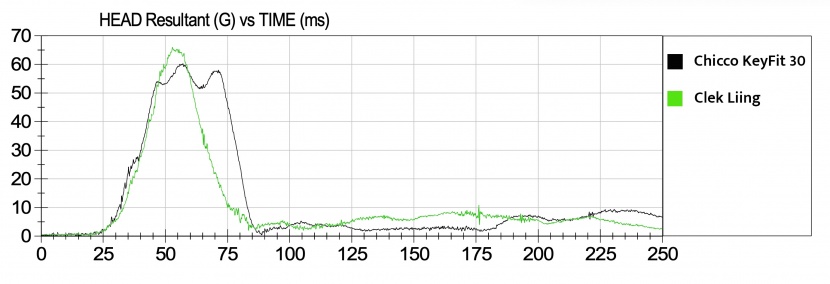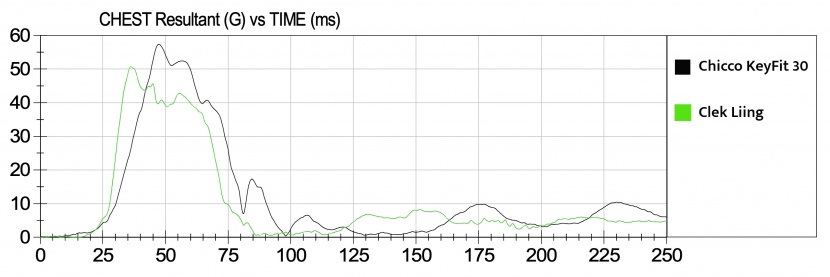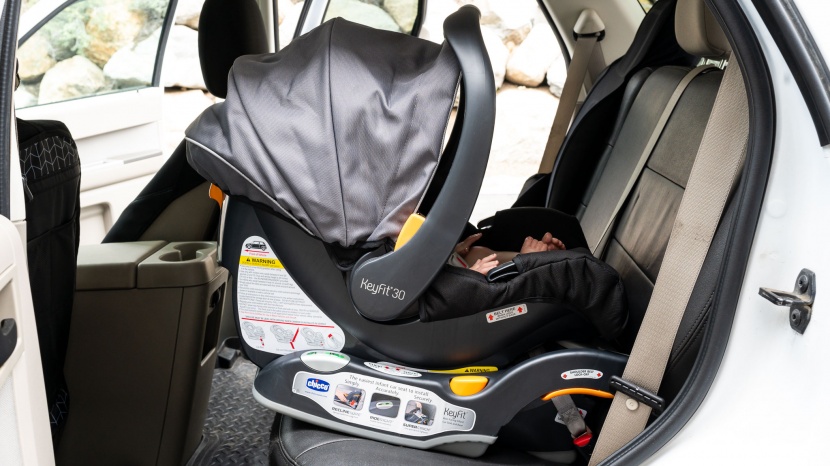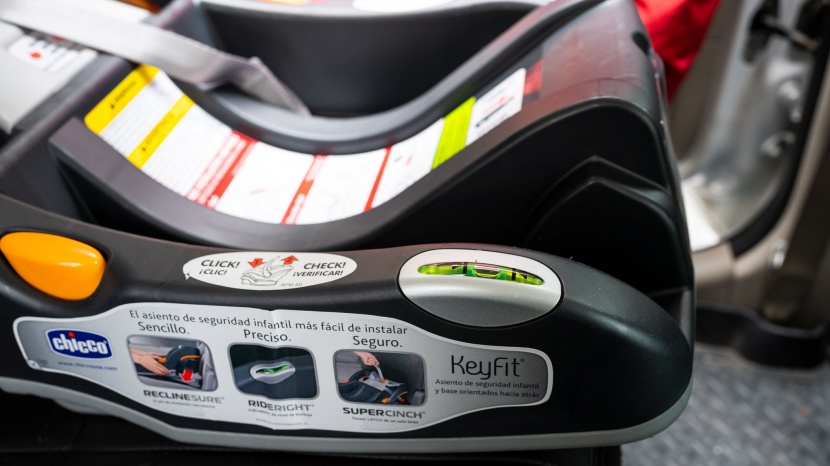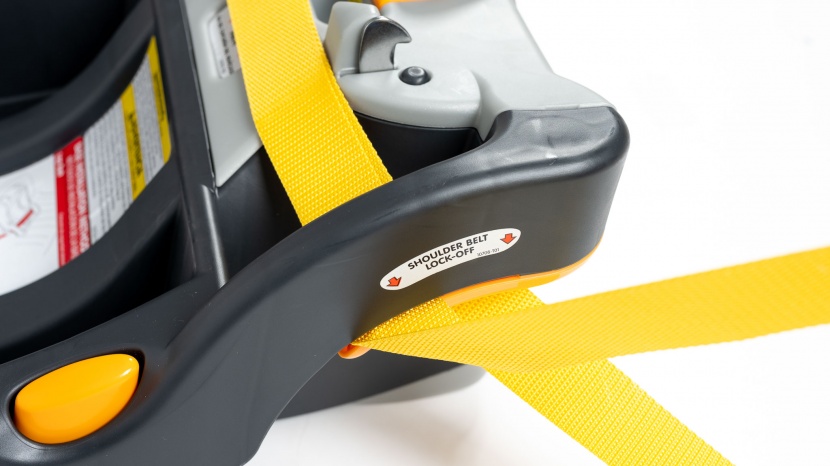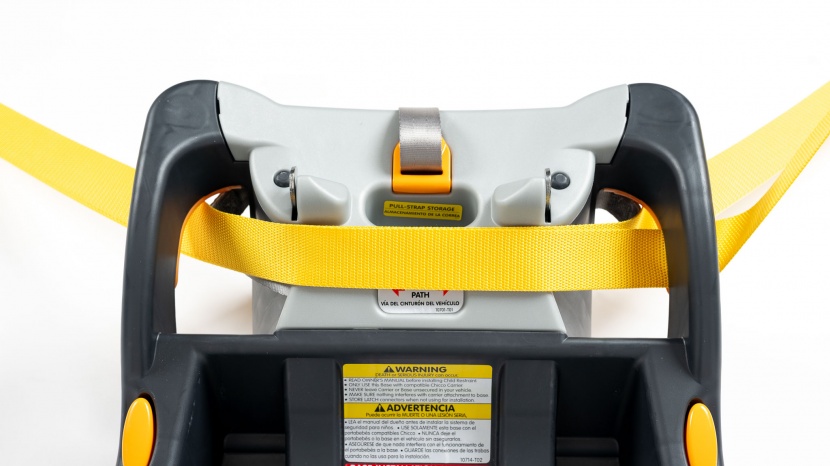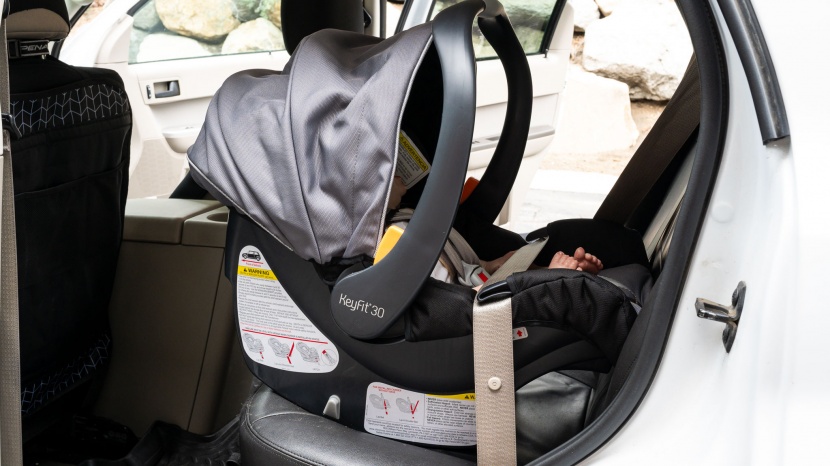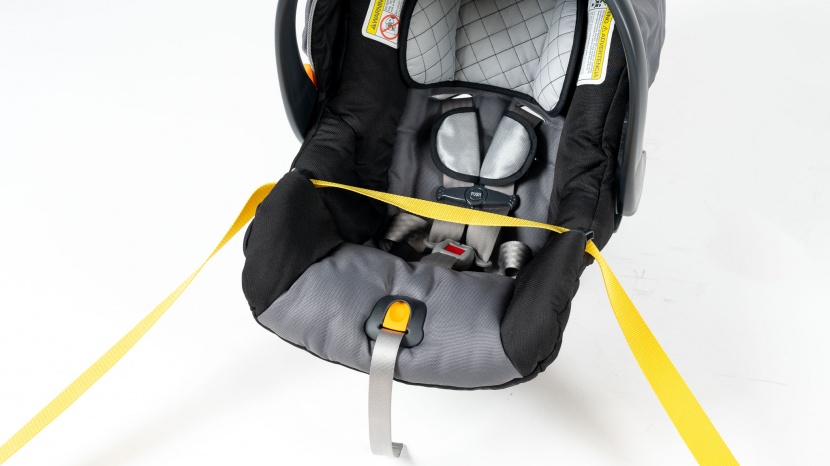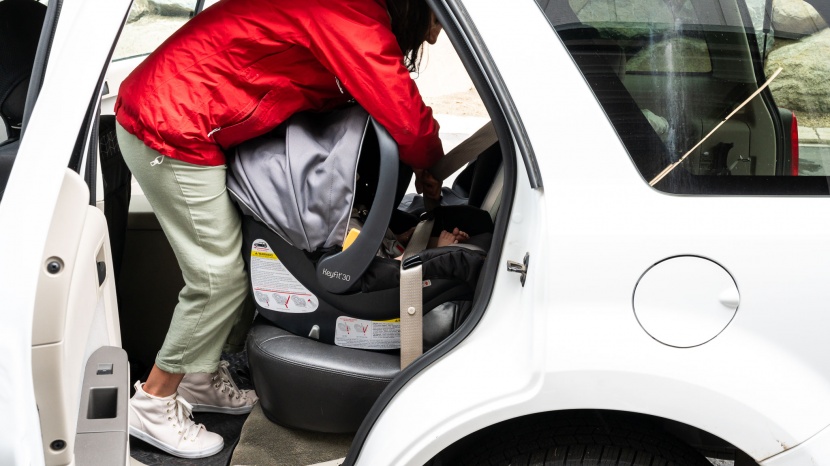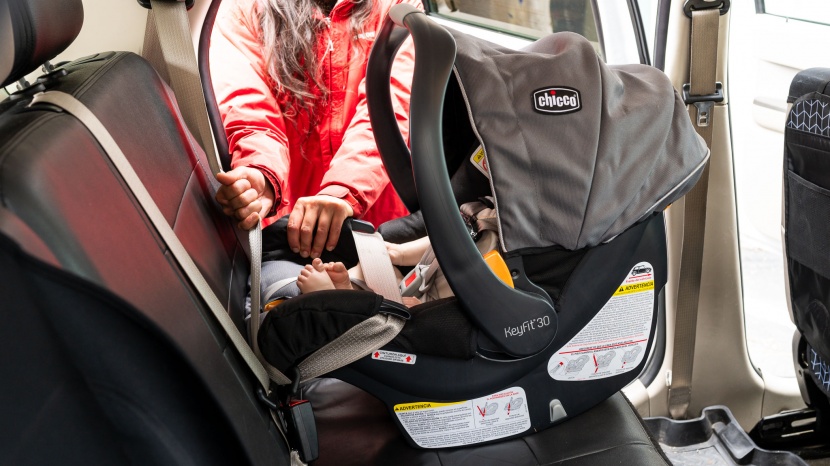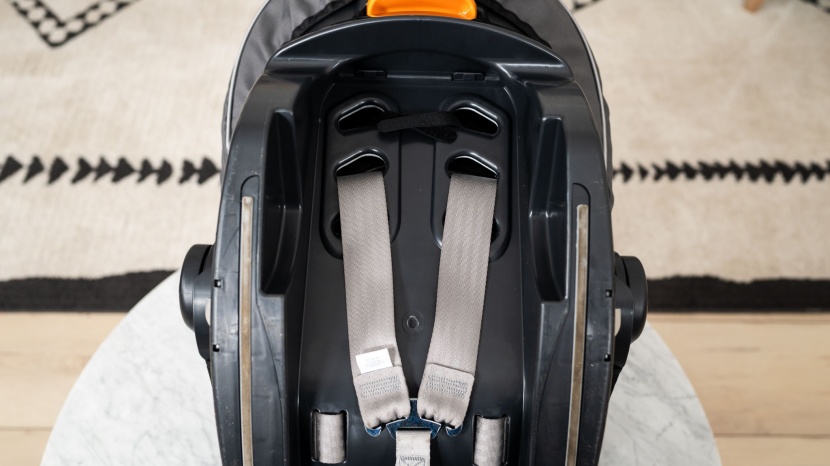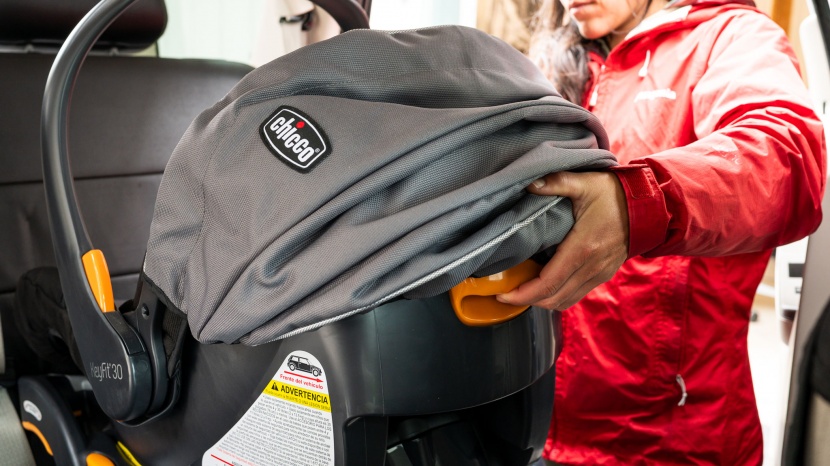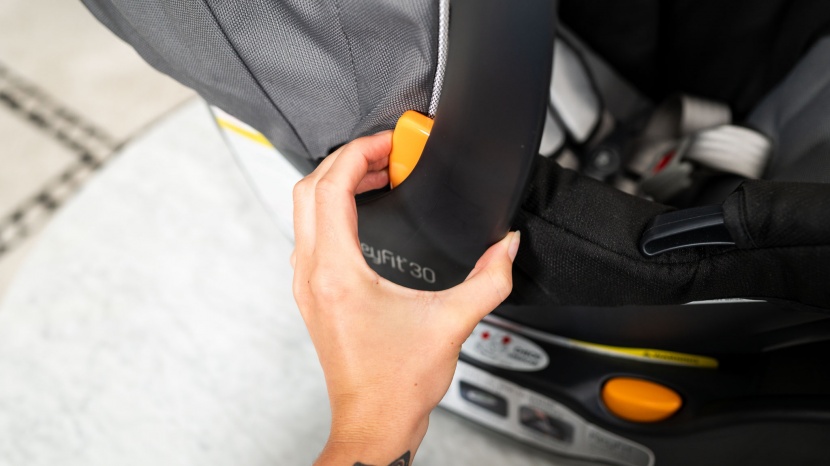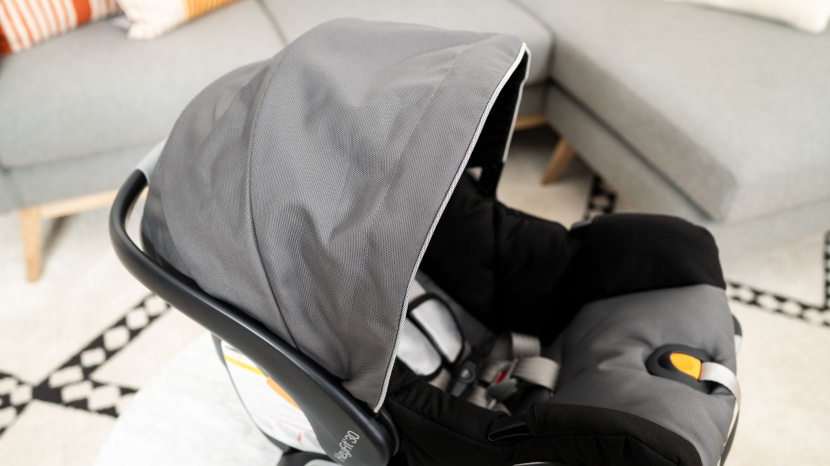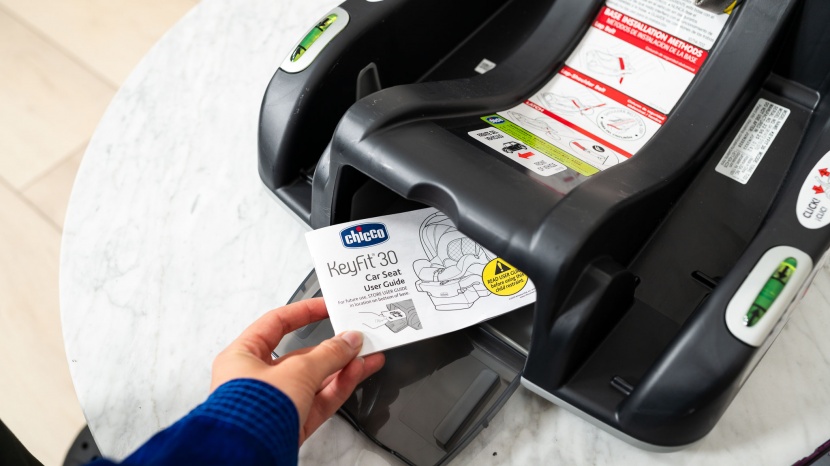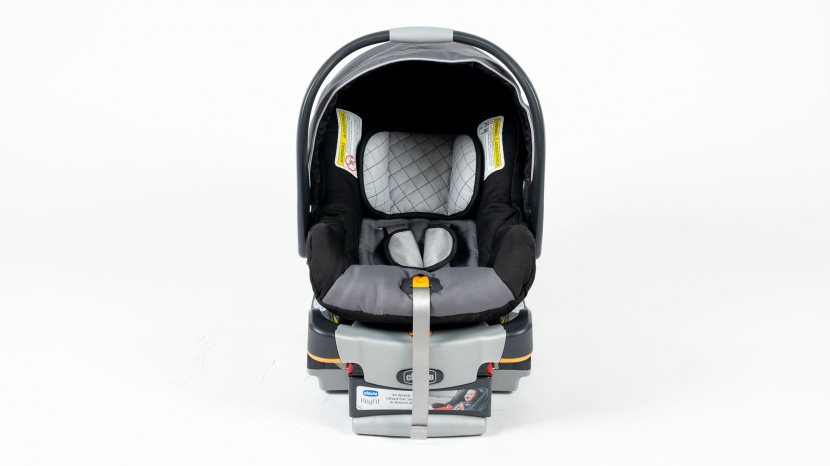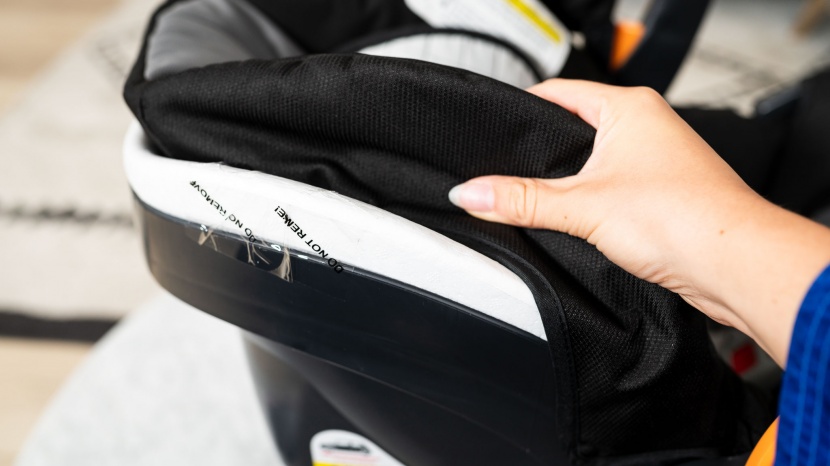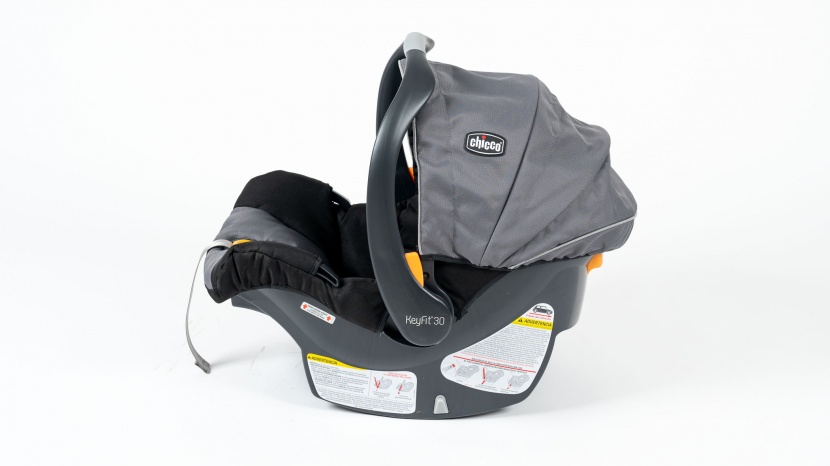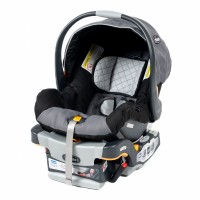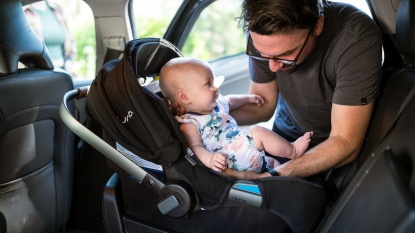
Our Verdict
Our Analysis and Test Results
Chicco (kee-ko) is the largest baby-centric brand in Europe and is part of the Artsana Group. Pietro Catelli founded Chicco and provides baby-related equipment to children from before birth to preschool age.
Crash Testing
The crash test analysis result for the Keyfit 30 is just above the average for the group, with sensor results for each location coming in better than the average results in our crash testing. All of the seats in our review meet the federal guidelines for safety and should, therefore, be considered safe.
We ran our tests a little faster and with a more modern sled to determine which options might provide a margin of safety over the standard and compared to the competition. This seat has head and chest sensor results that are better than those of many competitors, but they weren't good enough to make it into the top-tier results. Its best result was in the HIC (head) sensor, which showed G forces below the average. The chest clip sensor results were also good, with G forces lower than the average. Nothing is disappointing about its performance in the crash test, and it is the best-performing Chicco in this review, but it didn't match the results of the higher-scoring seats with lower G forces recorded in their sensors. If your goal is a Chicco seat with the best crash test results, this is for you. However, if you are open to other brands and the best crash test results are your priority, you might want to look elsewhere.
Ease of Installation LATCH
Installing the Keyfit 30 using LATCH is one of the easiest installation methods for this seat, but it isn't as easy as most of the competition, including other Chiccos.
This base has flexible straps attached to the push-style LATCH connections. There is no anti-rebound bar or load leg. The connectors have a guide to help you keep them on the right side, and minimal tightening needs to happen. It has one strap to tighten, and it pulls smoothly. We did use a knee on the base to ensure it was tight enough. There is no tensioner, but it doesn't seem to need one to help with installation or with getting things tight enough. The pull direction is perfect for ease of installation.
The seat is stable when installed and has almost no wiggle. The bubble indicators remained in the proper installation position without needing adjustment after installation.
Recline Adjustment
The Keyfit 30's level adjustment has five levels and a bubble indicator on either side of the base. The levels adjust easily with clear increments. To initiate the movement, you press one button on each side of the base simultaneously.
Ease of Installation - Belt
Installing the Chicco with the vehicle belt instead of the LATCH is about the same difficulty; if available, we'd recommend the LATCH over the belt.
The belt pathway is color-coded, with a built-in belt lock-off but no tensioner. The belt pathway is easy to access and maintain, but is slightly less open than competitors. Even if you can't fit your hand in the path, you can pass it to your other hand on the opposite side. We had to sit on the base or put a knee on it to get enough pressure to tighten the belt, likely because there is no tensioner. Luckily, the base has a relatively flat surface for comfortably placing a knee. The lock-off feels a little too far back on the base, and it didn't feel natural getting the belt to it. Once installed, it passes the wiggle test, and while not as tight as we'd like, it feels stable in both the sedan and small SUV test cars.
Ease of Installation - w/o the Base
Installing the Keyfit 30 without the base is the most challenging method for this seat. While not the hardest, we aren't convinced this seat is the best choice for those who plan to regularly install their carrier without the base.
Installation uses the American belt path with the vehicle belt across the foot of the carrier. The route is not color-coded but is evident and easy to access. The installation level indicator is a line decal on the carrier's side.
There is a note on the belt path, but the fabric means it isn't apparent, and you must bend over to see it. The lack of shoulder belt utilization means it is a simple installation. The belt doesn't slide in like some seats; you must thread it. Depending on your car, you might need a towel for installation, but we didn't. The shoulder belt on the vehicle makes tightening kind of awkward. We struggled to get this installed tightly enough, and it felt wobbly in both test cars.
Ease of Use
This seat is one of the easier options to use.
Buckle
This buckle has a flush release button, which is nice for longer nails. It isn't as large as we'd like, but it is easily workable. The shoulder strap prongs don't pop out independently, so you need to pull them out yourself. The buckle and crotch strap have no padding to impede the process. The one-location crotch strap could be a problem if the baby is bigger. The chest clip has a circular button in the center that you press to pull apart the two sides smoothly.
Harness Tightening/Loosening
Tightening and loosening are very easy. Each strap has its own hole instead of joining as one in the back, so the strap is easy to pull. The button has no flap or effort to hide it, making it easy to access.
Harness Adjustment
This seat is a rethread style height adjustment. This means you must detach the straps from a clip on the back and move them from one slot level to another on both sides. It isn't necessarily hard, but you can't do it with your baby in the seat, and it is more involved than non-rethread adjustments. There are only three height options. The T bar on the Keyfit 30 isn't wide enough for the straps, so they look wrong.
Carrier to Base Connection
The carrier-to-base connection is better than the average combination. The lighter weight of the carrier helped make the process easier. We didn't see a way to do it wrong accidentally, but given there are no indicators, we recommend giving it a good tug to make sure the connection is good. Removal is done with the lever on the back of the carrier and pulling up on the handle once it is released from the base.
Handle
The handle on the Keyfit 30 has three possible positions, all of which are allowable for driving. The handle can fold back to prevent the carrier from rocking when not attached to the base. Moving the handle past the canopy when closed is hard, and we believe this won't be very pleasant to deal with.
Canopy
The canopy frame is a bit wobbly, which causes it to move only on one side at a time. You either need two hands to adjust it, or you must do each side individually. If it were more rigid, it would be an easy one-handed maneuver.
LATCH and Manual Storage
The Keyfit 30 has cubbies for LATCH storage. There is no mechanism to keep them in place, but it was snug enough that they stayed put when we tipped and shook the base. It also has a flip-open holder for the manual on the base facing the front seat. It works well and keeps the manual out of the way of messes.
Comfort/Quality
The Keyfit 30 scores below the average by a hair for comfort and quality. However, it is also the lowest-priced Chicco we tested.
Fabric and Padding
The fabric on the infant insert and headrest feels smooth on the skin, but the headrest has stitching throughout, which seems unnecessary and could be abrasive or itchy to sensitive skin. The lighter grey seat material is better than the black sides, which are less friendly, but both should be in contact with clothes more often than skin.
The padding around the neck is minimal compared to the competition, and the padding on the sides and rear end area isn't much better. There doesn't seem to be much comfort padding on the back, and you can feel hard when you press down. While we liked the neck padding, overall, it pales compared to the nicer seats we tested.
Handle and Canopy
The handle has a nice rubber grip and is ergonomic with a circular design, not a thin handle. The sides widen somewhat, so it is more comfortable to scoop it under your elbow. We like it more than most.
This canopy is smaller than most. It is durable and didn't snag when we ran an open paperclip across the fabric.
Shell
The shell's outer surface is smooth with limited spaces for gunk to hide, and it should be easy to keep clean, wiping with a wet cloth. It doesn't look as nice as some competitors, but it gets the job done.
Weight/Size
The Keyfit 30 is lighter than the competition, with a carrier weight of 9.3 lbs. While not the lightest seat in the group, it is certainly more manageable for carrying than those that come in closer to 12 lbs.
Should You Buy the Keyfit 30?
If you are sold on a Chicco seat and want the best crash test analysis score, then the Keyfit 30 is the one to go with. It is a higher-scoring seat than average and performs better than much of the competition. However, if you want the best seat or even the highest-ranking Chicco, look elsewhere.
What Other Infant Car Seat Should You Consider?
If you want a Chicco seat with your Chicco stroller, then the Chicco Keyfit 35 is the one we prefer. With a slightly higher price tag, you get better performance in most metrics and only a marginally lower crash test analysis. If you are not married to the Chicco brand, and your budget has a lot of wiggle room, the best all-around seat with the highest overall score is the Nuna Pipa RX. This seat performs well in crash testing, is easy to install, and offers features like rigid LATCH and a load leg. If you need a high-performing seat at a more reasonable price, then the Britax Willow S is a good choice as long as you don't need to pair it with a non-Britax stroller. For an even lower price than the Willow, the Joie Rue has an impressive crash test analysis and is easy to install using LATCH.
Manufacturer Video
| Awards | |
|---|---|
| Price | $230 List Check Price at Amazon |
Overall Score  |
|
| Star Rating | |
| Bottom Line | Impressive crash test results but it isn't the most comfortable for a baby |
| Pros | Higher crash scores, easy to use, good handle grip |
| Cons | Minimal padding, small canopy, poor stability without base |
| Rating Categories | Chicco KeyFit 30 |
| Crash Test (40%) | |
| Ease of Install - LATCH (20%) | |
| Ease of Install - Belt (10%) | |
| Ease of Install - w/o Base (5%) | |
| Ease of Use (15%) | |
| Comfort/Quality (5%) | |
| Weight/Size (5%) | |
| Specifications | Chicco KeyFit 30 |
| Minimum Weight | 4 lbs |
| Maximum Weight | 30 lbs |
| Maximum Height | 30 in |
| Measured Carrier-Only Weight | 9.8 lb |
| Built in Lock Off | Yes |
| Method To Adjust Harness Shoulder Height | Rethread |
| Belt Routing Style | American |
| Anti-rebound Bar | No |
| Load Leg | No |
| Shoulder Harness Positions | 3 |
| Crotch Strap Positions | 1 |
| Number of Recline Positions | 5 |
| Locking Handle Positions | 3 |
| Allowed Handle Positions For Auto Travel | Any position |
| Level Indicator On Base | Bubble, both sides |
| Level Indicator On Seat | Line on Decal |
| Aircraft Certified | Yes |


